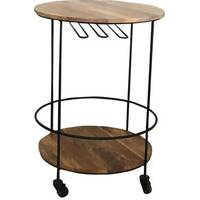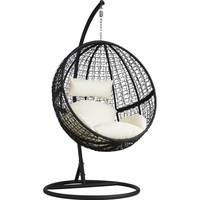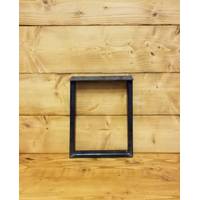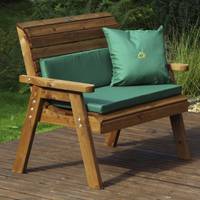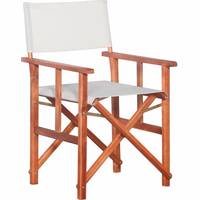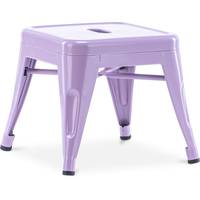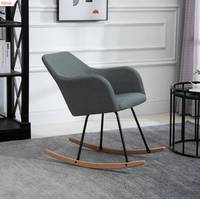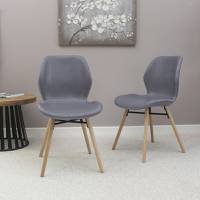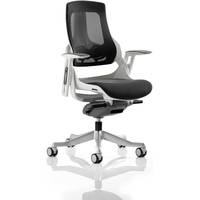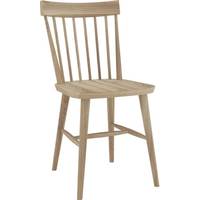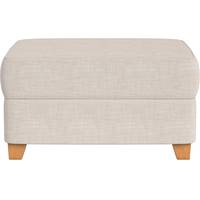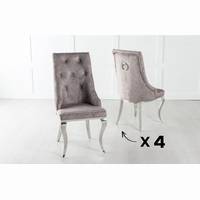Vitra Panton Chair Chair - / By Verner Panton
Description
Vitra Chair Red Plastic material. Dimensions: L 50 x Depth 61 cm x H 86 cm - Seat: H 44 cm. Treat yourself to an ORIGINAL iconic piece by Vitra. An original will always retain its value. It’ll be with you all your life and outlast you, ready to be passed on to the next generation. Danish architect and designer Verner Panton (1926 - 1998) is considered one of the most influential designers of the 20th century. This outstanding figure of Scandinavian design has created innovative, futuristic design objects during his career which still inspire the most avant-garde designers today. His style, typical of the 60s and 70s, remains imbued with great modernity. The Panton chair was designed by Verner Panton in 1959. Today, this chair is an icon of 20th-century design. It’s won numerous international design awards and is part of the permanent collections of famous museums. The Panton Chair was the first plastic chair made in one piece. Very difficult to produce because of its cantilevered shape, this chair has gone through several stages of production since it was first marketed. It’s only been possible to manufacture it according to its original design since 1999 - in durable plastic. The overhanging structure combined with a well adapted shape and soft material make the chair very comfortable to sit in. Danish designer Verner Panton developed the idea for a plastic cantilever chair in the late 1950s. However, no manufacturer showed interest in this daring concept. Vitra founder Willi Fehlbaum found the idea interesting but saw no possibility of creating it immediately. When Rolf Fehlbaum, Head of Product Development, returned full of enthusiasm from a visit to Verner Panton, he finally approved it. Verner Panton said: “One day Rolf Fehlbaum (the son of the founding family of Vitra) came to visit us and saw a prototype of the Panton chair. It wasn't stable enough to sit on. Why isn't this chair being made? Rolf asked. I answered: “Fifteen to twenty manufacturers have tried it, but for various reasons, they all refused to produce it.” A renowned American designer - it wasn't Eames - even said that this kind of object should not be called a ‘chair’, saying it wasn’t meant for sitting on.” Rolf immediately called Manfred Diebold, a technician at Vitra. […] Without Rolf, the Panton Chair would not exist.” So, in 1963, Vitra embarked on the development of one of the most iconic and famous chairs of the 20th century. This challenge proved almost impossible to master, as the bold shapes envisioned by the designer had to be reconciled with the physical limitations of plastics technology and the demands of production techniques. Years of intensive research, testing, development and abandoned prototypes followed. The ultimate shape of the chair was finally worked out through a series of ten prototypes in polyester reinforced with fibreglass, laminated by hand. In 1967, the Panton Chair could be produced in a small preliminary series of 150 pieces, in cold-moulded polyester reinforced with fibreglass. This was the first all-plastic one-piece chair with a cantilever structure. With its sculptural form and Panton’s characteristic bright colours, it was a sensation. However, the expensive, complex process did not meet the demand. After further successful trials on a new rigid polyurethane foam from Bayer, actual series production, using an injection moulding process, began in 1968. It did allow larger quantities to be produced, but still required fastidious manual finishing. Verner Panton and Vitra continued to search for better alternatives. They believed they’d found a promising solution in a new thermoplastic material developed by BASF. The material, however, turned out to be less durable than it initially appeared, causing the chairs to break and potentially damaging Vitra's image. Production was therefore suspended in 1979. At Vitra, the shock of this quality problem had a lasting effect for years. Interest in the Panton Chair continued throughout this time, however. Vitra resumed production in 1990 - reverting to the rigid unbreakable polyurethane foam, but requiring a complex finish. Advances in plastics technology, and in particular new possibilities of injection moulding, prompted Vitra and Panton to return to the question in the 1990s. A new version of the polypropylene Panton Chair was developed. Thus, thirty years after the start of mass production, one of Panton's key objectives was finally achieved: the plastic chair as an affordable industrial product. Verner Panton died shortly before the presentation in 1999. Vitra places a high priority on investing in innovation. The combination of the company’s technical know-how and the creativity of great designers makes it possible to go beyond the limits of creation. At the same time, Vitra is constantly updating design classics with designers or their descendants, following the original archived documents so that they can meet the needs of today's users. With this in mind, Vitra produces two models of this chair: the Panton Chair Classic, made of rigid polyurethane foam with a glossy surface, and the Panton Chair with a matt surface structure. In 2007, the Panton Junior children's chair was added, based on the designer's original plans.
You may also like
loading
Discover more









































